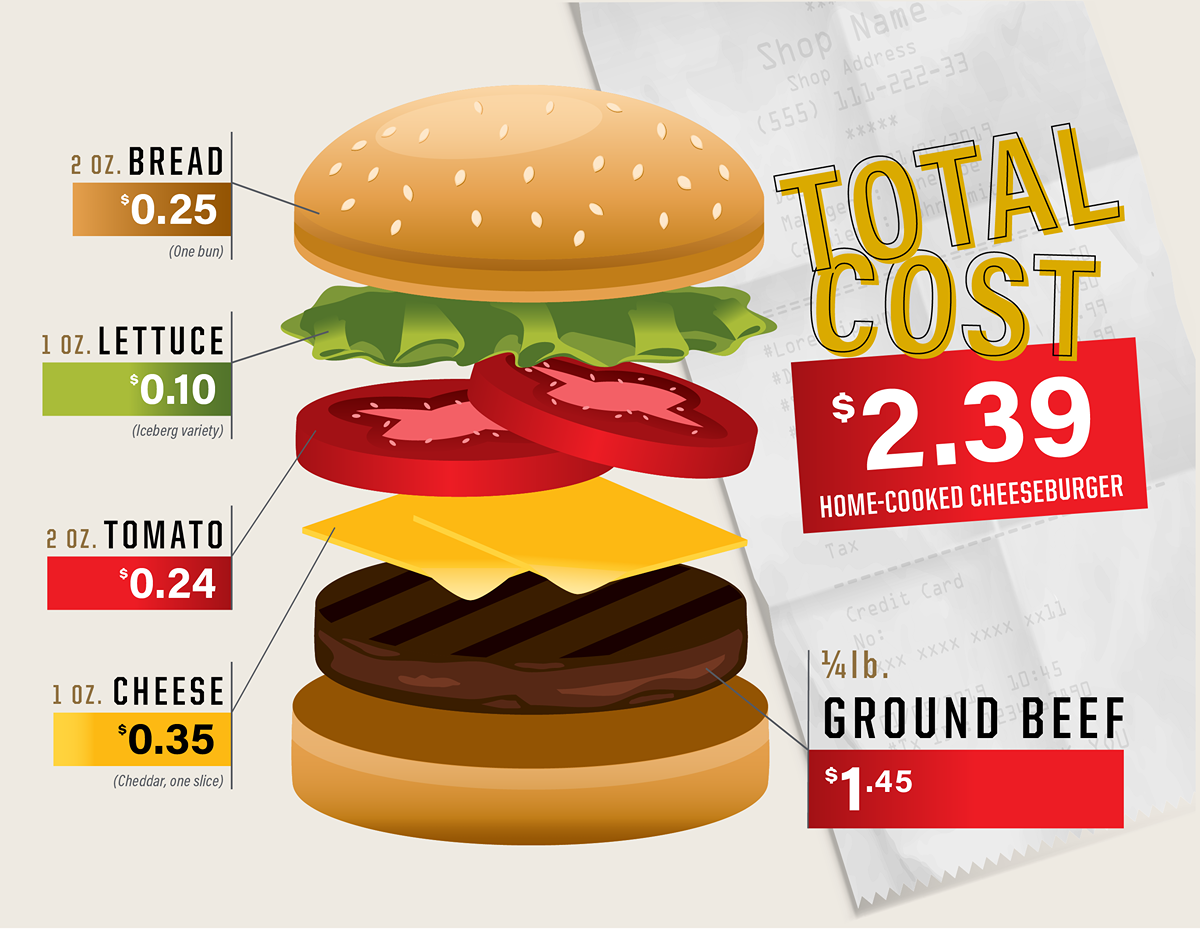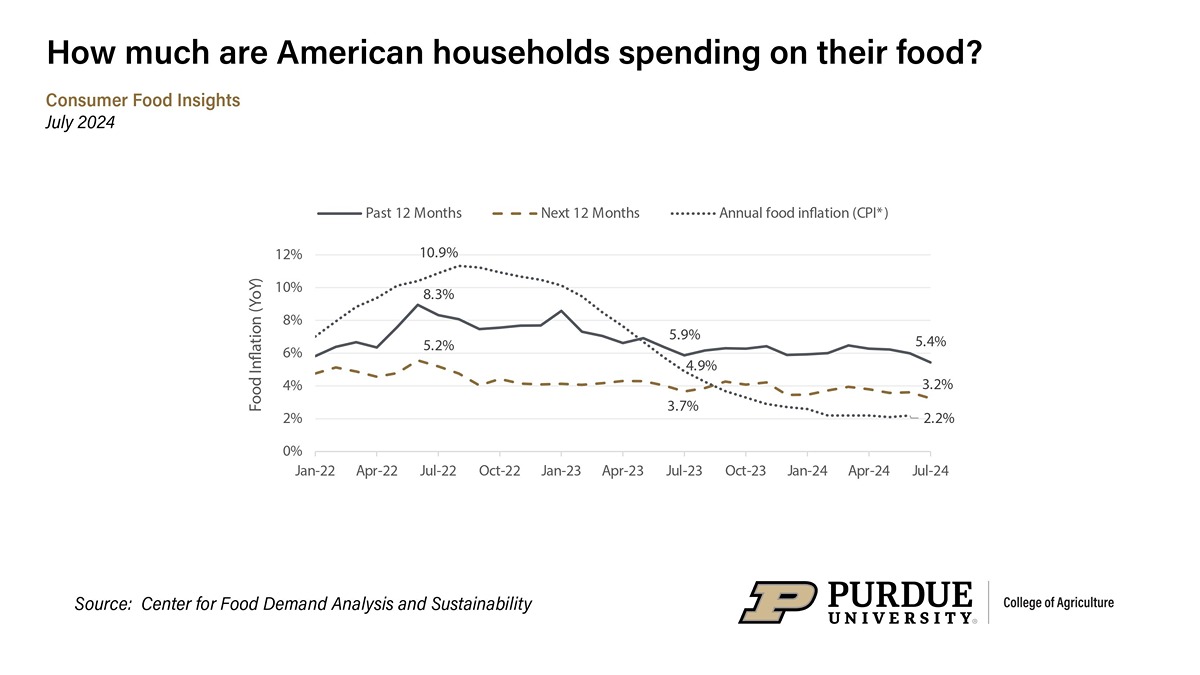With football season upon us, the familiar scent of cheeseburgers is wafting across tailgates and backyards throughout the country. As many of us fire up our backyard grills, we at the Center for Food Demand Analysis and Sustainability (CFDAS) cannot help but think of the economics behind this classic American meal. In this blog post, we break down the cost of a homemade cheeseburger in July 2024, comparing it to what it was in 2023, and talking about what it means for your wallet.
Let us start with the numbers. We will use grocery price data from the Bureau of Labor Statistics (BLS) to look at the prices of individual ingredients for a standard cheeseburger prepared at home. It should be noted that these prices are only grocery prices and do not include fuel costs, time to shop or other outside factors that may impact the price of a home-cooked cheeseburger. In July 2024, the average cost to assemble a cheeseburger at home comes to $2.39. Here is how that breaks down:
- Two ounces of bread or one bun: $0.25
- One ounce of iceberg lettuce: $0.10
- Two ounces of tomato: $0.24
- One ounce or slice of cheese: $0.35
- Quarter pound of beef: $1.45
Several factors contribute to the current cost of the classic cheeseburger. Summer typically sees increased demand for grilling staples, which can put upward pressure on prices. This seasonal effect is balanced by improvements in supply chain efficiency and a gradual stabilization of food prices following the turbulent years of the pandemic.
The cost of a home-cooked cheeseburger this year is just 2% higher than it was this time last year ($2.34). The higher price of a cheeseburger is consistent with broader economic trends when it comes to food. The consumer price index (CPI) for food has increased by 2.2% since July 2023.
This price increase is much slower than we have seen in recent years – for example, the change in food prices from July 2021 to July 2023 was 15%. Consumers’ inflation estimates and expectations are the lowest they have been since our survey began in January 2022.
The beef component of the cheeseburger, at $1.45 for a quarter pound, represents the largest portion of the burger’s cost. Beef prices are particularly sensitive to factors such as feed costs, transportation expenses and overall demand. The price of beef was expected to be a record high this year due to the high cost of maintaining herds and broader challenges facing American farmers. Today, the price of ground beef is up nearly 4% compared to last year.
Cheese prices, the second most expensive ingredient at $0.35 per ounce, decreased by 2.3% from last year and have been slowly declining since they peaked toward the end of 2023. The prices of lettuce and tomato have a seasonable component. In the summer, when produce is more readily available and transportation costs are lower, prices tend to be lower than they are in the fall and winter months.
Compared to prices last year, prices of the tomato and lettuce are slightly higher than they were last summer.
The price of an individual cheeseburger may not raise eyebrows, but for many households, these food costs are a significant part of the budget. It is essential to consider this price in the context of overall food spending. If a family of four enjoys cheeseburgers once a week throughout the three-month summer season, they are looking at spending about $114.72 for just one meal. Multiply this effect across various food items and it becomes clear how small price changes can significantly impact household budgets.
The price of a cheeseburger serves as a tangible barometer for everyday food costs. It reflects the interplay of global economic forces, seasonal trends and local market conditions. By understanding these factors, consumers can make more informed decisions about their food purchases.
Footnote:
- Figure 2 is from the July 2024 Consumer Food Insights report from CFDAS.




